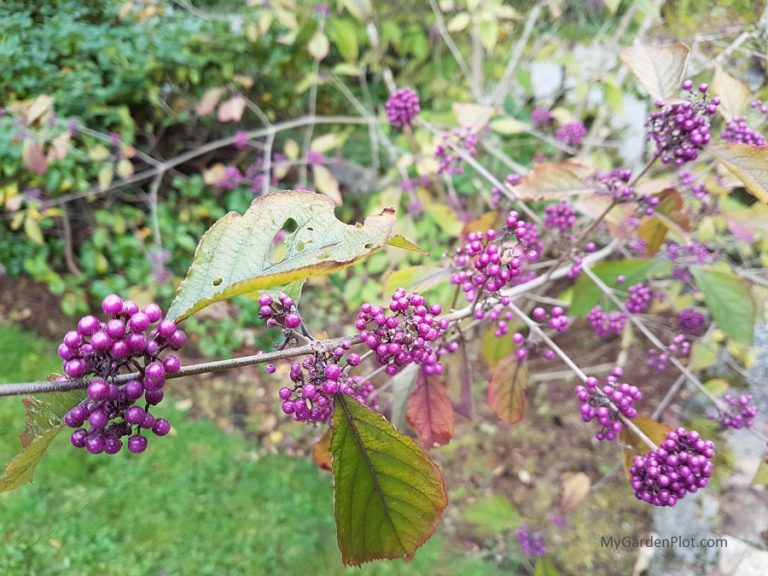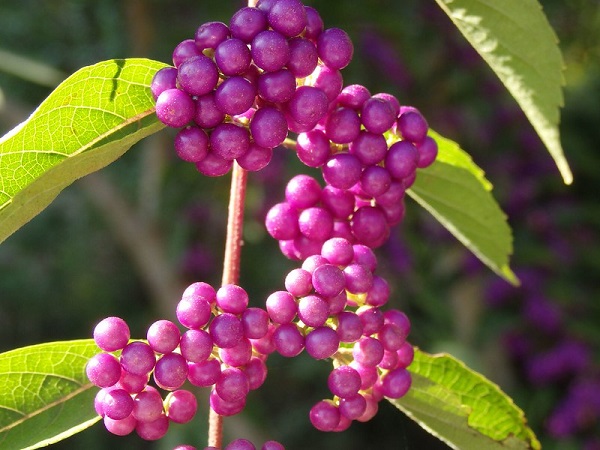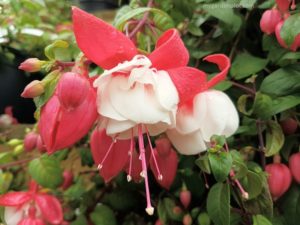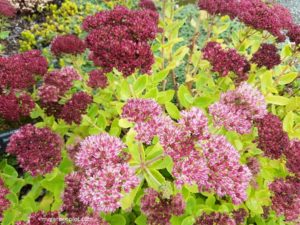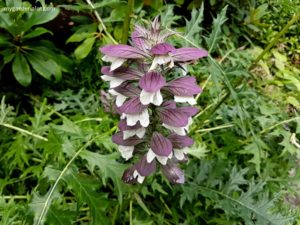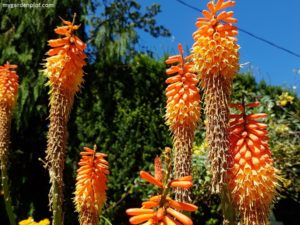About Callicarpa bodinieri var. giraldii 'Profusion' (Beautyberry)
The Callicarpa beautyberry is a unique shrub with its jewel-like berries adorning its branches in autumn (fall) and winter. It’s tiny flowers grow on new wood, which appears first followed by the desired eye-catching abundant berries. The attractive lavendar-purple berries are long-lasting and can remain until well into in January. It is attractive shrub and recommended for its colour in autumn and winter. Following are details where to plant, and how to grow and prune your beautyberry shrub.
The Callicarpa bodinieri var. giraldii (Profusion) is hardy and found in many gardens in our area of the Pacific Northwest. The beautyberry produces a dense clump of violet coloured berries, that remain after the leaves have fallen in late autumn. The C. japonica is a little less hardy and has white berries.
The beautyberry is relatively low maintenance, easy-care shrub with only minor pruning needed to be done. The growth is moderate but can reach over 1.5 metres (6 feet) tall.
Beautyberries are also a natural food source for many wild birds. The fruit is beneficial when other bird food sources are scarce in winter. If only for this reason alone, knowing how to care and prune your Callicarpa is important for better fruit yield for your birds.
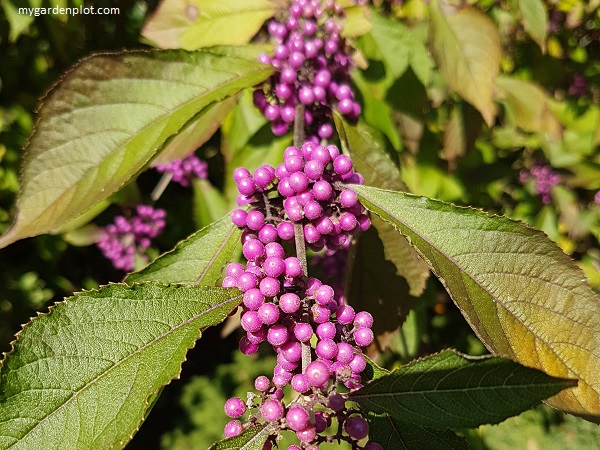
Beautyberry Shrub At A Glance
Type: Deciduous / Perennial Shrub
Location: Full sun
Berries: Autumn / Winter
Height and Spread: 1.2 m (4 ft) x 1.8 m (6 ft)
When To Prune: Spring (see pruning tips below)
Zones: 5, 6, 7, 8, 9
Cold temperature hardiness to: -29°C to -23°C (-20°F to -10°F)
When To Plant And How To Care For Your Beautyberry
This deciduous shrub should be planted preferably in spring or autumn. They prefer a sunny location but can tolerate a partial sunny site. Plant in fertile, well-drained soil. It benefits from an annual application of mulch in late autumn. The callicarpa also benefits being planted in groups as this ensures cross-pollination and higher berry production. The beautyberry is generally trouble-free. However, scale insects, leaf spot, or mildew may occasionally occur.
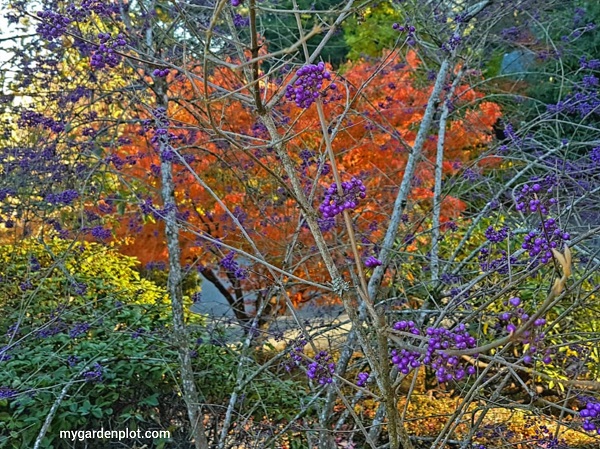
RELATED TOPIC: Buyer’s Guide On How To Choose Hand Pruners (Secateurs)
How To Prune Callicarpa Beautyberry
Beautyberries need annual pruning in spring to get rid of any straggly branches, damaged stems or old wood. Pruning should be done in early spring. This will further re-energize growth. The goal is to encourage a “vase” shape shrub from the ground.
The beautyberry can tolerate hard pruning back to about 10 – 15 cm (4 – 6 inches) from the base. This is generally needed when it has been neglected for a few years. But if you don’t want to completely cut it back and start again, prune about a quarter to half of the older branches. And the following year, do the remaining stems.
As we have learnt from past mistakes, pruning at the desired height is not recommended. It won’t hurt the shrub but it encourages cross branch growth. This removes the beauty in its vase growth habit. Keep in mind when cutting damaged stems as it is sometimes best to cut right down to 10 – 15 cm (4 – 6 inches) from ground level.
Tools Needed For Pruning Callicarpa Beautyberry
Below is the list of essential tools needed to prune a beautyberry shrub. Mature beautyberry shrubs naturally have thick stems that can easily become overcrowded, so you will likely find having a pruning saw very useful. For beautyberry shrubs that are annually maintained with routine pruning, a good quality hand pruner and loppers may be all that is used.
- Hand Pruners – Bypass pruners are the most popular choice for gardeners and a must in a pruner’s tool kit. Bypass means the blades pass each other in a scissorlike action providing a clean cut without splintering the stem’s edge. The anvil-type pruner, where the upper blade cuts against a lower flat edge, must always be kept sharp. Otherwise, it will crush the stem while trying to cut it.
- Long-handled Loppers – These are similar to pruners but with long handles. These are heavy-duty and great for harder to reach stems and branches that may also be too thick for pruners. Loppers with extendable handles offer that extra reach.
- Pruning Saw – Saws are useful for thick stems that are growing close together. A Grecian saw or Japanese-blade pruning saw is a handsaw with a curved or straight edge that works with a pull-stroke action. Great for those stems that pruners and loppers can’t cut. It will need a protective case. We also recommend a folding hand saw with a pull-stroke action for smaller gardens. It looks similar to a large pocket knife and works in the same manner as a Grecian saw.
- Hedging Shears – You will need a standard pair of shears for trimming the ends, mainly with hedging and topiary. Some shears have a notch at the base of the blade that enables cutting thicker stems.
- Garden Gloves – Optional but a pair of gardening gloves help keep hands clean and provide protection. Fabric gloves with vinyl offer a good grip on the fingers and palm. Good for warmer weather. For more challenging jobs, a pair of suede or leather gloves go a long way. Not too comfortable in warmer weather, though.
RELATED TOPIC: Buyer’s Guide On How To Choose A Pruning Saw
